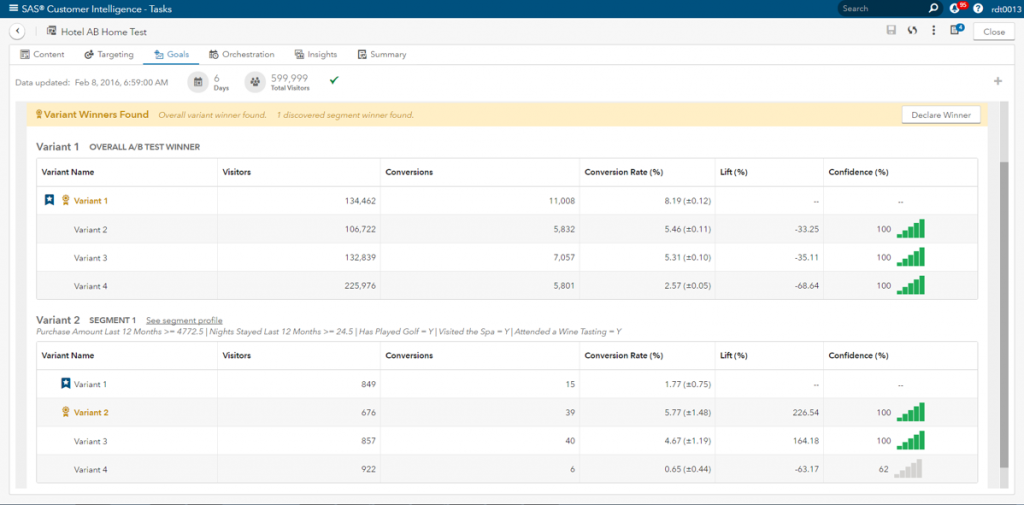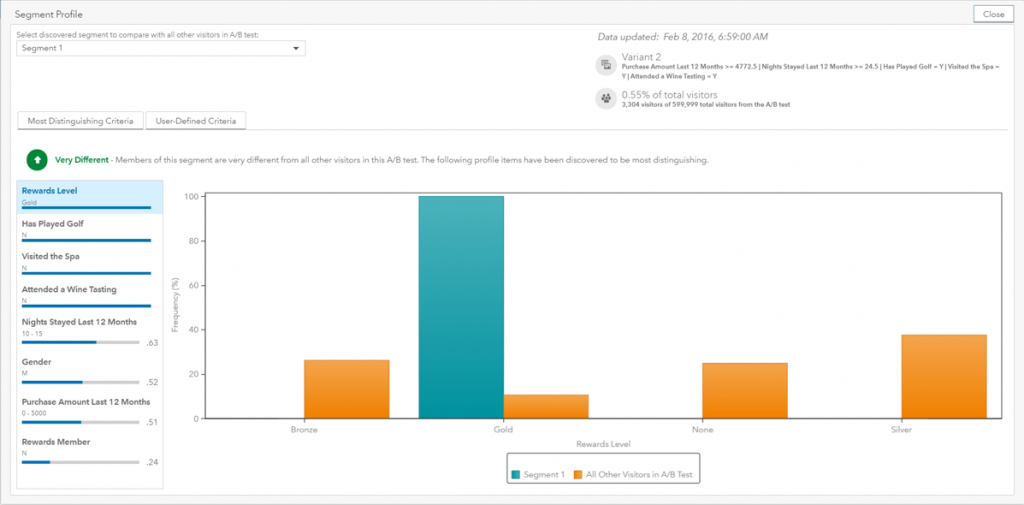For the uninitiated, SAS 360 Engage enables organizations to interact with consumers by allowing them to create, manage and deliver digital content over web and mobile channels. Wait a minute. SAS does more than the analytics? That is correct. SAS 360 Engage is a marketing super force serving as a one-stop shop for data capture all the way through delivering highly-targeted, personalized digital experiences.
Being able to dynamically place content and offers into digital channels – across devices and points in time – is nothing new for savvy marketing brands focused on optimization. As customer journeys spread across fragmented touch points while customers are demanding seamless and relevant experiences, content-oriented marketers have been forced to reevaluate their strategies for engagement. But the complexity, pace and volume of modern marketing easily overwhelms traditional planning and design approaches that rely on historical conventions, myopic single-channel perspectives and sequential act-and-learn iteration.
Presently, marketers primarily use a variety of content optimization approaches that include A/B testing and multivariate testing. A/B testing, at its simplest, is a method of website or mobile optimization in which the conversion rates of two versions of a page are compared using visitor response rates. By tracking the way visitors interact with the content– the videos they watch, the buttons they click, or whether they sign up for a newsletter – you can infer which version of the content is most effective.
Due to the popularity of this technique, SAS 360 Engage supports A/B/n testing. A/B/n testing is an extension of A/B testing, where “N” refers to the number of versions being tested, anywhere from two versions to the “nth” version. For example, when a brand has more than one idea for what the ideal digital experience should be, A/B/n can be used to compare each hypothesis and produce an optimized decision based on data, not subjectivity.
Testing is attractive because it is efficient, measurable and serves as a machete cutting through the noise and assumptions associated with delivering effective experiences. In parallel, the evolving marketing landscape is driving a greater mandate for testing: to operate in more channels, handle more data and support more users. Testing must mature beyond traditional on-site experimentation to fully optimize a multifaceted customer journey.
The majority of today’s technologies for personalization have generally failed to effectively use data science to offer consumers a contextualized digital experience. Many of today’s offerings are based on simple rules-based segmentation to drive recommendations. Building off the benefits of multi-channel A/B/n testing, this is where SAS 360 Engage injects its analytical muscle to differentiate from other personalization technologies. Let's break this down:
- At the conclusion of an A/B/n test, there is usually a winner and one or more losers.
- Is there really one superior experience for your entire marketable audience? Is it possible that experiences should vary by segment?
- Performing algorithmic segmentation sounds awesome, but who really has the time to do it? We have so many tests to run.
SAS 360 Engage was built with the recognition that some marketing teams don't have data scientists available, and have real needs for analytical automation. To improve upon the concept of A/B/n testing, augmenting this capability with automated, algorithmic segmentation with prescriptive results addresses an important need. Let's assume you've run an A/B/n test with four versions of a page, and variant A was crowned the champion. Wouldn't it be nice to know that if a specific segment arrived at your website, an alternative experience would facilitate a better result?
If you look closely at the image, you will note in the upper half of the report that the winner of the A/B/n test is variant A. However, the lower half of the report showcases a newly discovered segment. It turns out that when a specific customer segment with recent purchase, stay and amenity activity interacts with this hospitality brand, variant B produces better results. How did SAS 360 Engage do this? By applying automated firepower (i.e. algorithmic clustering) to produce this prescriptive and actionable insight. To learn more about this segment, marketers can profile the audience:
A beautiful and interpretable visualization is generated highlighting what is unique about this segment, as compared to everyone else who was exposed to the test. If the brand wants to target this audience in future campaigns, a single click populates this segment in the platform for future journey orchestration.
The time has arrived for predictive marketing to have its moment in the sun, and with Forrester recently naming SAS the leader in customer analytics, it's official - the 800-pound gorilla in advanced analytics is locked in on solving complex issues facing the space of data-driven marketing. Making digital personalization more relevant for target audiences is just like preparing a delicious meal; it all comes down to the ingredients and preparation process to rise to the occasion!






